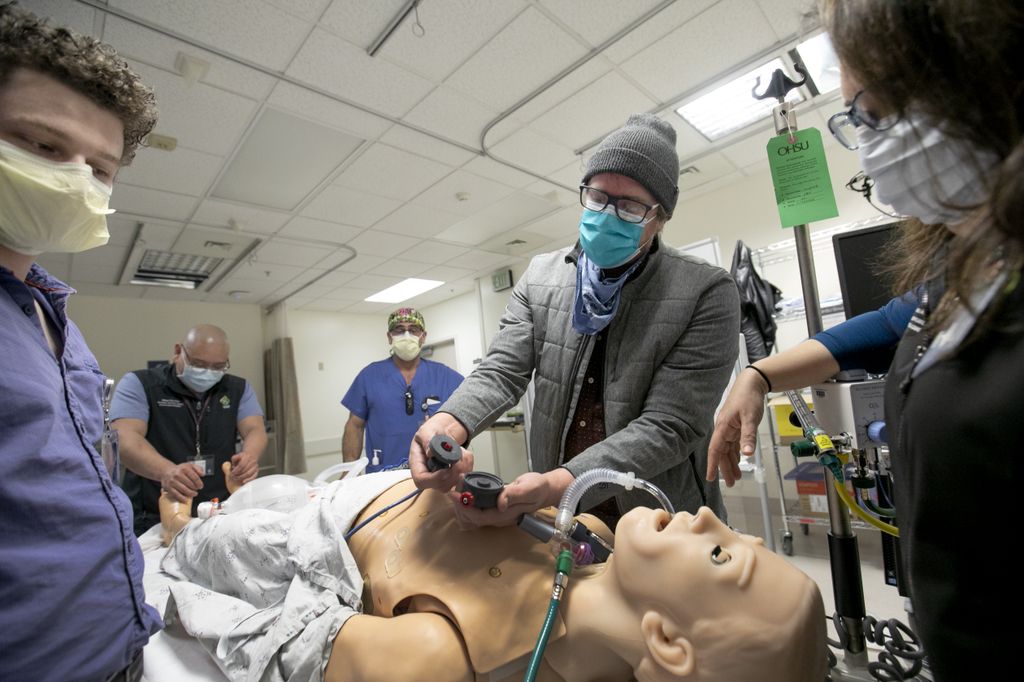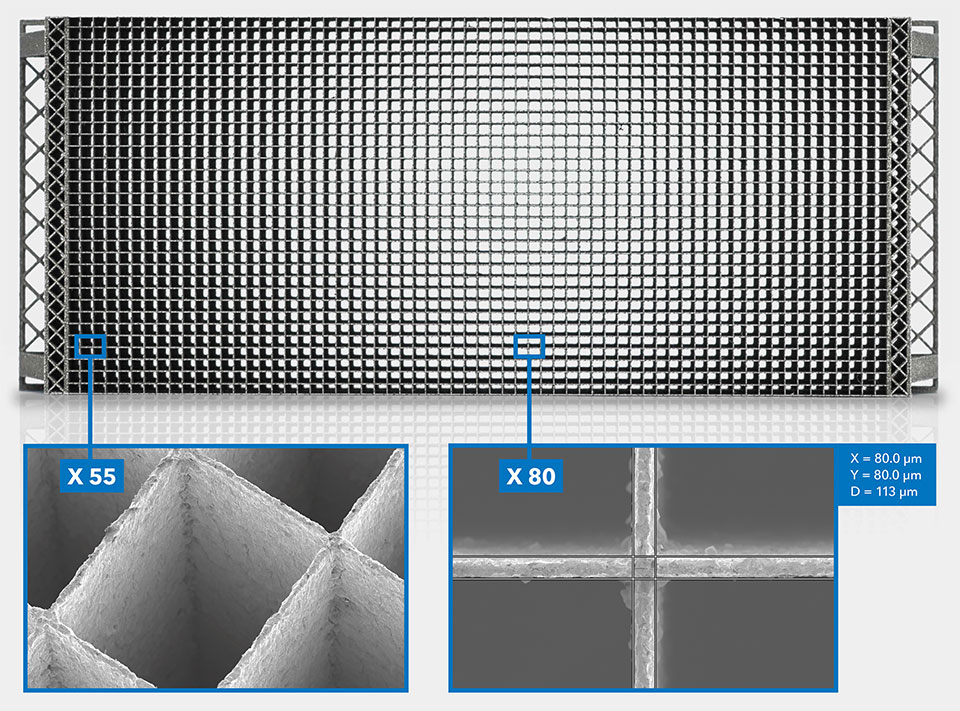Companies, organizations and individuals continue to attempt to lend support to the COVID-19 pandemic supply effort. We will be providing regular updates about these initiatives where necessary in an attempt to ensure that the 3D printing community is aware of what is being done, what can be done and what shouldn’t be done to provide coronavirus aid.
Albert Chi, a trauma surgeon from Oregon Health and Science University (OHSU), and the team at Limbitless Solutions, a 3D printed prosthetics company, are creating a ventilator that does not require electricity. Instead of using electronics, the device relies on airflow from an oxygen tank. The design is made up of 3D printed parts, low-cost, off-the-shelf components and can be made with less than $10 in materials, according to its makers. This makes it possible to not only manufacture the product nearly anywhere in the world, but use it in places without electricity.
Using printers at its lab at the University of Central Florida, Limbitless was able to make 10 iterations of Chi’s designs for the device, which were then sent to his lab at OHSU for testing. After seven days of continuous functioning, the team found that there were no issues, leading Chi to file for emergency approval by the U.S. Food and Drug Administration.
Because CT scanning is a crucial technology for examining the respiratory issues caused by severe cases of COVID-19. To deal with the increased use of the technology during this time, Dunlee is ramping up production of anti-scatter grids for CT systems with 3D printing. The grids are used to absorb unwanted scatter radiation, in turn improving the quality of CT scans. Its Cone Beam CT line, for instance, is able to improve the signal-to-noise ration by 1.7 times, according to the company. Working with EOS, the company is obtaining new printers and using its existing machines to print pure tungsten grids 24 hours a day.
3DPRINTUK is helping to provide facial shields to workers at the National Health Institute. Pointing out that some of the existing shield designs are meant for material extrusion systems, the British 3D printing service bureau has optimized a model for large batch printing using selective laser sintering machines.
By nesting the parts, the company is able to print 260 brackets for face shields in a single print in 27 hours on an EOS Formiga P110 system. The bracket is made from PA2200/Nylon 12, features a closed-peak design for greater protection, and can be flat packed in an A4 envelope, according to the company. Managing Director of 3DPRINTUK Nick Allen said:
“That is 6 minutes per shield, which is a game changer. The design that we created clips together in 10 seconds, uses silicone straps for adjustment, can take an acetate sheet with 3 holes, is lightweight at only 42 g, and is sterilisable with IPA, autoclave, or ethylene oxide (Et0). All in all, we believe that this is the most efficient visor design to produce via 3D printing available today.”
Because 3DPRINTUK is currently using its own fleet of printers to produce ventilator parts with the UK cabinet and manufacturers, the company partnered with the Arts University Bournemouth, who used its own P110 machine and laser cutting capabilities to produce 5,000 face shields. The partners are inviting other SLS systems owners to aid in production capacity, as well.
One employee of Thomson Reuters has been producing face shields at the company’s office in Costa Rica, making over 100 such devices for healthcare workers and raising money within the office to buy filament. Given the fundraising effort, it’s worth noting that the multinational media conglomerate has a net income of $4 billion. The company’s chairman, David Kenneth Roy Thomson, is the Lord Baron of Fleet in the U.K. and, as of 2019, was the wealthiest person in Canada with a net worth of $37.8 billion.
Global military members are also producing medical devices. A fighter pilot for the Italian Air Force is 3D printing valves for ventilators at local Italian hospitals, including 50 “Charlotte Valves” and 50 “Dave Valves”. Soldiers from the 20th Chemical, Biological, Radiological, Nuclear, Explosives Command, which has a unique role given the nature of the pandemic, are using their 3D printing capabilities to produce NIH-approved face shield designs for local healthcare workers and beyond. The 10 volunteer soldiers, who met in an Explosive Ordnance Disposal (EOD) Facebook group, aim to make more than 13,500 face shields to send to 28 states and one U.S. territory.
ExOne has posted its Q1 20202 earnings in the midst of the pandemic and has reported total revenue of $13.4 million, a 40 percent increase over Q1 2019. The company also says that it has a record backlog of $33.8 million, with CEO John Hartner tying this strong to new product introductions and the number of orders backlogged from the end of 2019. Like SLM Solutions, which reported a similar pattern of increased revenues and orders from the previous year, Hartner says that the impact of the virus could be felt in March:
“Despite initial effects of COVID-19 on our business, our execution performance was solid. Globally, our facilities continued to operate in support of our customers in critical industries and essential businesses, subject to social distancing and other procedures to keep our employees safe.” He continued, “However, conditions clearly changed in March. We previously anticipated that growth would continue during 2020, but the COVID-19 pandemic has impacted shipping, travel and installation schedules, as well as the timing of customer capital investments. The uncertainty of our outlook caused by this situation prompted us to reduce our cost structure as we manage through these historic times.”
As the pandemic continues to grip the world, we will continue to provide regular updates about what the 3D printing community is doing in response. As always, it is important to keep safety in mind, remain critical about the potential marketing and financial interests behind seemingly good humanitarian efforts from businesses, and to do no harm.
Subscribe to Our Email Newsletter
Stay up-to-date on all the latest news from the 3D printing industry and receive information and offers from third party vendors.
You May Also Like
3D Printing News Briefs, April 13, 2024: Robotics, Orthotics, & Hypersonics
In 3D Printing News Briefs today, we’re focusing first on robotics, as Carnegie Mellon University’s new Robotics Innovation Center will house several community outreach programs, and Ugogo3D is now working...
Rail Giant Alstom Saves $15M with 3D Printing Automation Software 3D Spark
3D Spark has entered into a three-year deal with the rail giant Alstom. Alstom, a transport behemoth with annual revenues of $16 billion, specializes in the manufacture of trains, trams,...
Meltio Expands Global Reach with New Partnerships in the Americas and Europe
Spanish 3D printing manufacturer Meltio has expanded its sales network across the globe. With the addition of three new partners in the United States, Brazil, Argentina, and Italy, Meltio aims...
3D Printing Webinar and Event Roundup: April 7, 2024
Webinars and events in the 3D printing industry are picking back up this week! Sea-Air-Space is coming to Maryland, and SAE International is sponsoring a 3D Systems webinar about 3D...

































